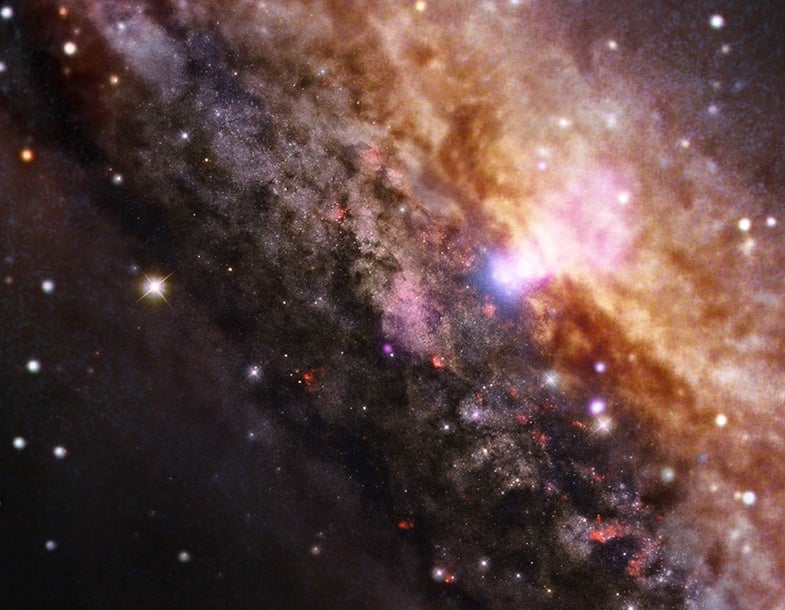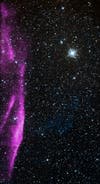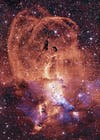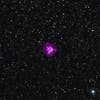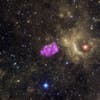Space fans, try to contain your excitement: NASA has just released some never-before-published images from its archive. These portraits of our universe come from the Chandra X-ray Observatory, which launch in 199. NASA explains:
This means Chandra has captured some dramatic events. See our favorites in the gallery. NASA makes all of the data from Chandra freely available.
Click here to enter to gallery.
Boom
After a massive star in the Milky Way exploded, it produced a shock wave of high-energy particles, seen here in purple. In the background, you can see stars as imaged by the Digital Sky Survey. Chandra captured data on the shock wave in 2003. It is estimated to be 2,400 light-years away.
Whoosh
In the center of this image is a galaxy with a supermassive black hole. All around it are huge plumes of radiation. How huge? The image is about 590,000 light-years in width. There are two types of data in this composite image. The orange represents radio data from the Very Large Array, while purple in the photo represents x-ray data from Chandra. The telescopes captured these data in 2007. The objects in the image are estimated to be 410 million light-years away.
Sagittarius
This is the Sagittarius arm of the Milky Way galaxy, shown mostly with optical data from the European Southern Observatory. The x-rays Chandra detected, shown here in blue, likely arose from wind blowing from young stars, according to NASA. This image comes from 2005 and shows objects about 9,100 light-years away.
Black Heart
Chandra’s X-ray data revealed a supermassive black hole in the center of this galaxy, called NGC 4945. (To get a sense of what the entire galaxy looks like, check out this image.) NGC 4945 is about 12 million light-years away. Data from this image come from 2000 and 2004.
A Round One
Here’s a supernova from the Small Magellanic Cloud galaxy. Chandra data show the supernova itself, while infrared data show other objects around the stellar explosion. The data in this image come from 2003.
A Boxy One
In here, Chandra’s data, shown in purple, show the heated remains of an exploded star. Researchers think they took on this cube-like shape when they encountered surrounding cool gas. Around the supernova remnant, you can see other objects in this patch of sky as imaged with infrared (yellow) and optical (red, green and blue) data.
A Real Show
Over the past 100 years, astronomers have observed eight supernovas in the spiral arms of NGC 6946, nicknamed the Fireworks Galaxy. Chandra data helped identify three of those supernovas. This image shows Chandra’s x-ray data in purple, along with optical data in other colors. The data come from five sessions between 2001 and 2004.
